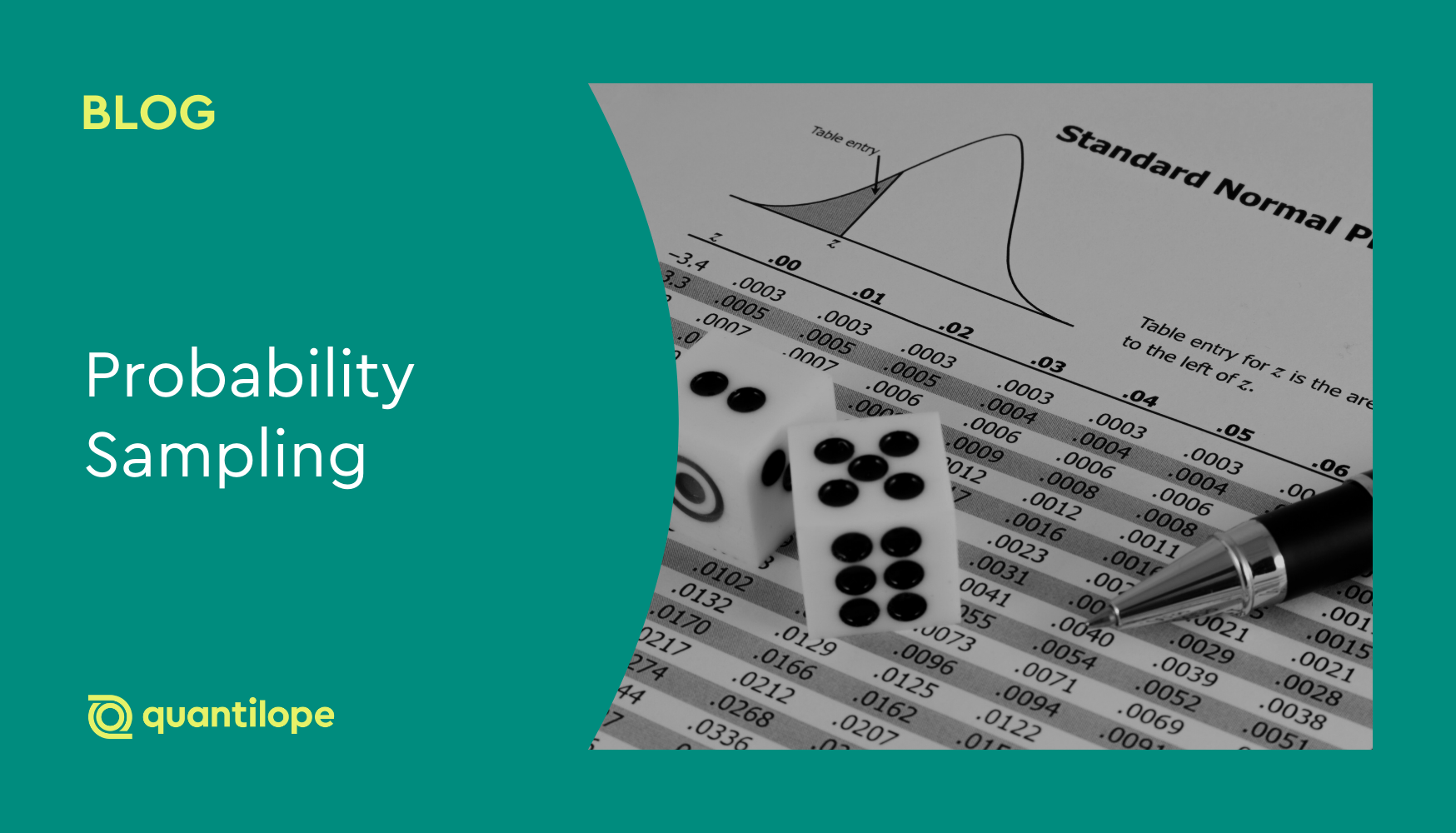Examples of probability sampling
While simple random sampling is fairly straightforward, let’s put the other types of probability sampling mentioned above into more context with three examples:
Retail survey using systematic sampling
A retail brand wants to understand the customer satisfaction of its large volume of daily shoppers. Due to time constraints, they decide to use systematic sampling to speed up the data collection process.
First, the brand determines the desired sample size, considering the level of precision required for its analysis. For example, they may decide to survey every 15th customer who enters the store.
Next, they randomly select a starting point (i.e. the third person to walk into the store after 9 am). From that point onwards, the researcher surveys every 15th customer in a systematic manner (starting with the 3rd customer, 18th customer, 33rd customer, etc.)
This systematic sampling approach ensures that every 15th customer is included in the sample, providing a representative view of the overall customer population visiting the store and allowing the brand to make inferences about the customer satisfaction levels in the retail store as a whole.
Smartphone survey using stratified sampling
A market researcher is conducting a survey on consumer preferences for a new smartphone. They recognize that age and income are important demographic factors that may influence consumer behavior and preferences for this product, so in order to gather a representative sample, they decide to use stratified sampling.
First, they identify three age groups that are likely to be in the market for smartphones: 18-25, 26-40, and 41-60. They also consider income levels as additional stratification variables and create three strata based on that: low-income, middle-income, and high-income.
Next, they determine the desired sample size for each stratum based on the proportions within the population. For instance, if the 18-25 age group represents 20% of the total population, they would aim to include a proportional number of individuals from this stratum in the total sample.
The market researcher then proceeds with random selection within each stratum, such as a random number generator to select a specific number of individuals from the 18-25 age group, another set from the 26-40 age group, and so on.
Urban studies survey using cluster sampling
A market researcher is conducting a survey on consumer behavior in a large city with diverse neighborhoods. Due to time and budget constraints, the researcher decides to use cluster sampling to streamline the data collection process - knowing they can’t survey the entire population in that area.
First, they divide the city into clusters or neighborhoods, such as downtown, school zones, and residential communities. Each cluster represents a group of individuals who share common characteristics or geographical proximity.
Next, they randomly select a few clusters from the available options. For example, they may randomly select three neighborhoods out of the ten in the city.
Within the selected clusters, the researcher aims to collect data from all individuals or households within those neighborhoods. They may choose to go door-to-door to every residence in that area or send out a survey based on those neighborhood zip codes.
Back to Table of Contents
Probability sampling vs non-probability sampling
By now you’re an expert on probability sampling methods and how they’re used. But how do these sampling approaches differ from non-probability sampling techniques such as convenience sampling, snowball sampling, or quota sampling?
| Probability Sampling | Non-probability Sampling | |
| Randomization: | Random selection of participants | Non-random selection of participants |
| Chance of selection: | Every element in the population has a known and equal chance of selection | Selection is based on convenience, judgement, or other non-random factors |
| Representation: | Provides a representative sample of the population | May not provide a representative sample |
| Generalization: | Allows for generalizations and inferences about the population | Generalizations about the population are limited or not possible |
| Sampling error: | Can estimate sampling error and calculate confidence intervals | Sampling error is not easily quantifiable |
|
Sampling frame: |
Requires a sampling frame (i.e. a list of population elements) |
May not require a sampling frame |
| Sample size: | Sample size can be calculated to achieve the desired precision | Sample size may be determined by practical considerations (i.e. who’s available or nearby) |
| Statistical testing: | Allows for a wide range of statistical analyses and tests | Statistical analyses may be limited |
| Use cases: | For research requiring generalizations and statistical analysis | For exploratory research, pilot studies, and qualitative research |
As you can take away from the list above, probability sampling methods aim to provide a sample that is representative of the population and allows for statistical inferences, while non-probability sampling methods are often used when representative sampling is difficult or not feasible.
Back to Table of Contents
How to conduct probability sampling research
Ready to start sampling using a probability-based technique? Follow this step-by-step guide to get started:
Step 1: Define the population
Clearly define the target population for your research. It should be a well-defined group of individuals or elements that you want to study and make inferences about based on your business objectives.
Step 2: Determine the sampling frame
Create or identify a sampling frame, which is a list or representation of all the elements in the population (i.e. households in a certain zip code, employees of a business, etc.). The sampling frame should cover all members of the population and be accessible for sampling.
Step 3: Select the sampling method
Choose an appropriate probability sampling method based on your research objectives and the characteristics of the population. Reference the section above - types of probability sampling!
Step 4: Calculate the sample size
Determine the desired sample size to achieve the desired level of precision and statistical power. Consider factors such as the desired level of confidence, acceptable margin of error, and population variability. You can use statistical formulas or sampling calculators for this.
Step 5: Randomly select the sample
If you are using simple random sampling, use a random number generator or a randomization procedure to select individual elements from the total sampling frame. For other sampling methods, such as stratified sampling or cluster sampling, randomly select the appropriate strata or clusters.
Step 6: Collect data from the sample
Once you’ve selected your sample size and sampling method, start collecting data from the chosen individuals or elements according to your research design. This may involve online surveys, in-person or video interviews, ethnographic observations, or other data collection methods.
Step 7: Analyze the data
As mentioned above statistical analysis is a perk of using probability sampling methods and should be used to calculate descriptive statistics, conduct hypothesis tests, and generate inferential analyses about your population.
Step 8: Generalize the findings
Use your survey findings to make inferences and generalize them to the larger population. Probability sampling methods allow for statistical generalization, enabling you to make valid conclusions about the population based on the characteristics of the sampled individuals.
Back to Table of Contents
Advantages and disadvantages of probability sampling
Let’s now summarize the advantages and disadvantages of using probability sampling strategies in your market research efforts:
Advantages
-
Representative sample: Probability sampling methods provide a higher likelihood of obtaining a representative sample that accurately reflects the characteristics of the population, allowing for more accurate generalizations and inferences.
-
Quantifiable sampling error: Probability sampling allows for the estimation of sampling error, enabling researchers to calculate things like confidence intervals and measure the precision of their findings, which ultimately increases the reliability of their results.
-
Statistical analysis: Probability sampling methods enable the use of various statistical techniques to analyze the data, allowing for rigorous statistical inference, hypothesis testing, and valid conclusions about the population.
Disadvantages
All that being said, probability sampling is...
-
Resource-intensive: Probability sampling methods can be time-consuming and require substantial resources, particularly when dealing with a large population, making them costly in terms of time, effort, and budget.
-
Complex: Some probability sampling methods, such as stratified or cluster sampling, require more advanced planning, coordination, and execution compared to simpler sampling methods, such as convenience or quota sampling.
Back to Table of Contents
So, when should you use probability sampling techniques?
In general, probability sampling techniques should be used when you need to make generalizations about a larger sample or sampling unit based on the characteristics of a representative sample. Ideally, your population should be well-defined with a reliable sampling frame when using probability sampling, to avoid selection bias.
Probability sampling is also the best sampling approach to use when you need quantifiable measures of sampling error and want to employ rigorous statistical analysis on your data set.
Back to Table of Contents
Conducting probability sampling with quantilope
quantilope is panel agnostic, allowing research teams to connect any panel of their choice to the end-to-end consumer intelligence platform. This might include a list of respondents the research team has already gathered from their own customer base (perhaps even by using a sampling method such as systematic sampling), or a list of respondents gathered from a third-party sample vendor using other sampling techniques.
Whichever sampling method works best for your business, know that you can connect that sample to quantilope’s platform without any barriers.
To learn more about quantilope’s consumer intelligence platform and how to leverage it for your own consumer surveys, get in touch below!





